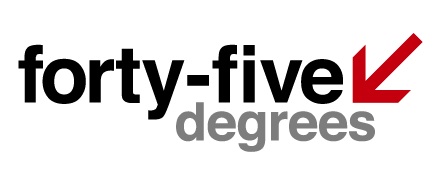Five web design clichés to never use again
Keith Butters, chief experience officer and co-founder of The Barbarian Group, lists his top five web design clichés that he would like to never see on the internet again
Disclaimer: I make no apologies if this reads like an early-80’s Andy Rooney bit from 60 Minutes: “What I really hate about all these phone books is…”
There are certain things I see over and over again in this business that make me cringe like I’ve been forced to chew on a tinfoil sandwich. Like the wireframe that’s nothing but a big rectangle with three equally-sized rectangles underneath it – “There’s your homepage” – or any other kinds of design that come from utter lack of inspiration.
The following are the short list of things we should never do again (or at least wait until they can be done with some semblance of retro-hip irony). I’m sure there are lovely examples out there of these elements or techniques being used tastefully, properly, or in inventive ways, but I’m going with the thought that 99 per cent of the time, if you’re doing this stuff, you just aren’t trying.
1. The page curl
In the early days of The Barbarian Group, while working out our processes and company documentation we created Form 9987AF234PC – The Page Curl Waiver. Essentially, we decided that any designer was allowed only one “page curl” for their entire design career. The waiver encompasses everything from the faux rolled-up corner of a piece of “paper” in a flat design (ValuPak style), to one of the all-time worst pieces of interaction design ever invented: the click-and-drag-the-corner-of-an-image-to-literally-turn-the-page Flash trick. Our waiver may say you get one “page curl”, but really, the web would be a much better place if none of us ever used one again.

2. The book metaphor
A not-too-distant cousin of the page curl is the (overused and misused) book metaphor. I’ve been guilty of having to work on a couple of these over my career, and I’ve reviewed comps of far too many journal, scrapbook, school notebook, newspaper, legal pad, moleskine, spiral-bound, trapper-keeper, 16 And Pregnant titles style high-school sketchbook metaphor designs. Every time I see one of these, all I can think to myself is, “Wow, they really didn’t try very hard”. Now, there may be some cases where a very talented designer can make this metaphor work, but as a general rule: don’t go there.
3. Doors
Using animated door-like panels to conceal and reveal content, including such classics as: Star Wars style spaceship doors, garage doors, revolving doors, elevator doors, etc, should go away and never return. Thankfully, the decline of the Flash microsite has helped make the use of “doors” all but disappear. With all the new JavaScript animation fanciness people are using these days, we could see a resurgence. Let’s not.
4. The 45 arrow
What to do to spice up that white, black and red, big-Helvetica based design? The drop-shadow isn’t working, and the fat horizontal bars don’t seem to be moving the eye across the page properly.
Get the Creative Bloq Newsletter
Daily design news, reviews, how-tos and more, as picked by the editors.
Enter the 45 Arrow. You know the one. The second slot in your Photoshop’s trusty custom shape tool menu. Hold down shift and rotate to 45. Stop it. There are plenty of other elements to poach from mid-century Swiss graphic design, yet somehow this little dingbat has been a go-to for web designers for as long as I can remember. Let’s call a moratorium on this one. Maybe in 10 years it can be retro once more.

5. The million sharing options
Content should be shareable, absolutely. The problem I see on so many sites now is that there’s more “sharing stuff” than stuff to share. Just today I was on a site that had 24 (twenty four!) sharing options not including Google’s +1 and Facebook’s Like buttons.
Now I don’t mean to disparage any other networks out there, but do we really need buttons for things like Plurk, Mixx, and Mister-Wong? (Perhaps those services are amazing, I just have absolutely no idea what they are.) If you don’t know enough about the users you’re designing for to choose a limited (targeted) number of sharing options, maybe the best move is to show the usual suspects and have an option to “show more”, the same way YouTube does.
Also, does every story excerpt in a list need their own Tweet, Like and +1 buttons? First impressions are important, but deciding to Like or share something probably takes a bit more personal investment than reading a headline and the first phrase of an article. And what a viscerally displeasing mess all that crap makes a page design.
I realise there are all kinds of usability studies and web standards and design guidelines and page level requirements out there that we need to be aware of. I also know there are times when you’ve got an hour to explore a second design direction. Even in those situations, I urge you to leave the tired clichs in the cellar and try a little harder. Keep your own list of things you never want to see again. Keep a list of your own go-to crutches (I’ve seen that button style on every comp you’ve done all year) that you need to stay away from in order to grow as a designer. The only way to create the new, is to stop relying on the same old tricks. Let’s stay inventive.

Thank you for reading 5 articles this month* Join now for unlimited access
Enjoy your first month for just £1 / $1 / €1
*Read 5 free articles per month without a subscription

Join now for unlimited access
Try first month for just £1 / $1 / €1
The Creative Bloq team is made up of a group of design fans, and has changed and evolved since Creative Bloq began back in 2012. The current website team consists of eight full-time members of staff: Editor Georgia Coggan, Deputy Editor Rosie Hilder, Ecommerce Editor Beren Neale, Senior News Editor Daniel Piper, Editor, Digital Art and 3D Ian Dean, Tech Reviews Editor Erlingur Einarsson, Ecommerce Writer Beth Nicholls and Staff Writer Natalie Fear, as well as a roster of freelancers from around the world. The ImagineFX magazine team also pitch in, ensuring that content from leading digital art publication ImagineFX is represented on Creative Bloq.
